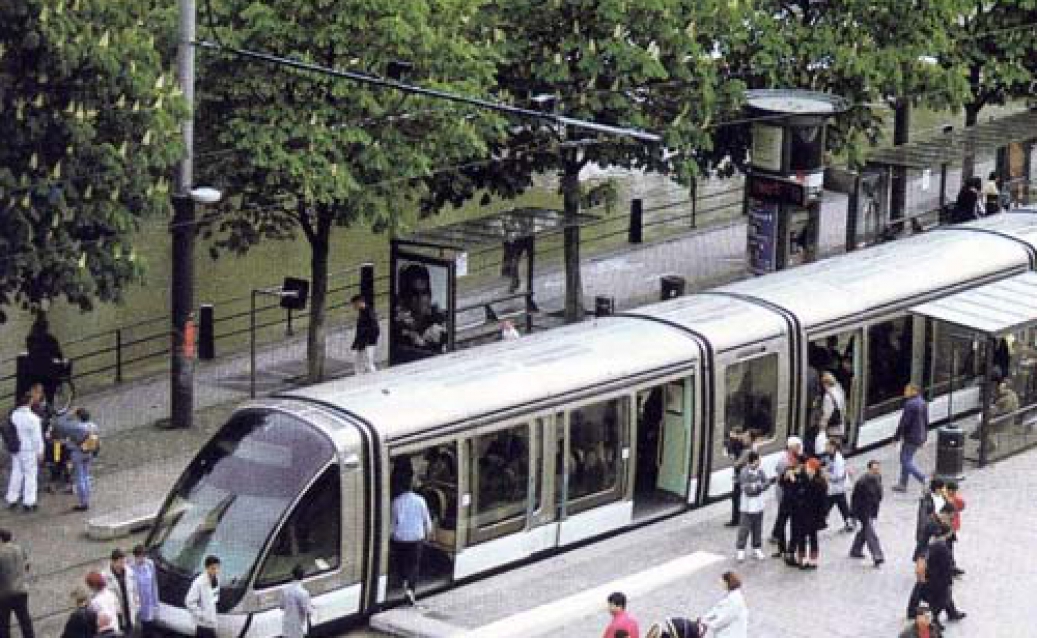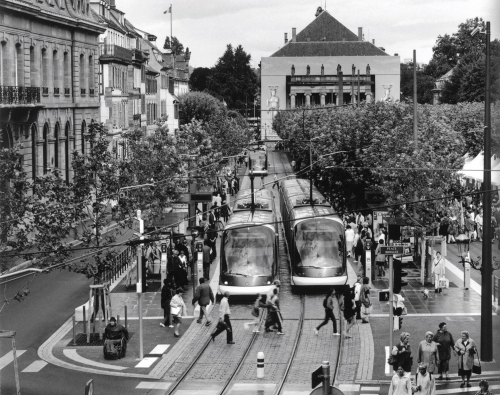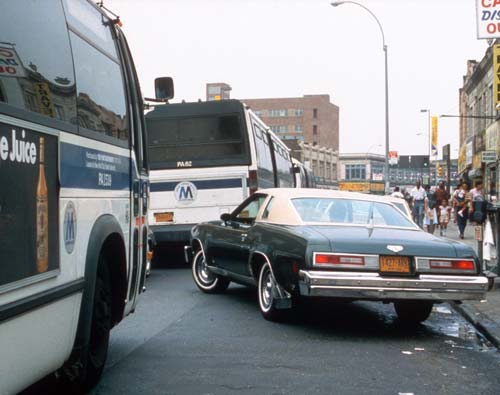Modern light rail is the updated version of streetcar technology, re-designed with low floors to meet contemporary needs for accessibility by seniors, parents with strollers, and persons in wheelchairs, while permitting reduced boarding times and higher capacity. Its longer vehicles allow greater driver productivity than buses, cutting operating costs.
Why light rail, rather than bus rapid transit or select bus service for vision42? A unique feature of all rail transport systems making them ideal for cities is their ability to absorb large increases in the number of travelers they can handle without congestion. This can make for a very fluid and pleasurable riding experience. And because the rail vehicles are guided by their tracks, their operations are more reliably compact than those of other modes, which makes them especially appropriate and safe for pedestrian streets. The rails also provide a more obviously dedicated path that discourages motorists from entering and delaying transit vehicles. These features have led to high qualities of passenger service, and therefore strong records of attracting passengers of all income levels.
An affordable option: Significantly, if 42nd Street is made car-free, an ADA-accessible light rail line can be built at-grade for only around one-tenth the cost per mile of what a subway would have cost – since no elevators, stairs, or costly ventilation systems will need to be built or maintained – a cost comparison confirmed through experiences both in US cities and around the world. This is what we are proposing for 42nd Street.
The work of a team of internationally well-regarded consultants—Urbanomics, Inc., Sam Schwartz Engineering, PC, and Halcrow, Inc.—reports that are posted elsewhere on this website, include financing studies that detail how project costs would be well-covered by the economic benefits expected to be generated by the light rail line. The consultant team also found the relatively short route of 42nd Street to be a good candidate for self-propelled light rail vehicles, either battery-powered or, more likely—fuel-cell powered. This would preclude the need for overhead wires while yielding zero greenhouse gas emissions, creating an opportunity for carbon-free transportation in a busy, economically vibrant portion of the city, and providing a living example for other American cities of how this might be done
Located at-grade, light rail’s easy boarding and inexpensive station platforms will allow frequent access points at every major avenue along 42nd Street, making it an ideal distributor for the subways and north/south buses. Light rail will also be able to serve the ferries, something that the subways cannot do—lending credence to the City’s interest in a citywide ferry network—and can serve massive new developments planned along the Hudson and East Rivers, as well as important tourist generators on the waterfronts, such as the UN Headquarters and Javits Convention Center.
These conveniences of light rail have been recognized in cities around the world, and in recent decades the mode has been used to create premium quality local public transport in the cities of such countries as France, Spain and Germany. There, light rail often even co-exists with bike paths—and this might be a distinct and much appreciated option here in New York. An environmentally welcoming 42nd Street might also be made open to the kinds of sidewalk mini-restaurant facilities that have been so popular here in the city during the Covid crisis.
Of unique value to New York could be a potential light rail connection between Midtown Manhattan and the United Nations, with benefits to both: The route of the vision42 light rail could pass close to the UN Headquarters Center, thereby offering a world-class public transit option for a large population of diplomats, employees, and visitors to the UN. New York is honored to be host to the UN, and fluid access to it via carbon-free light rail would celebrate this reality.
Trams in France View some 20 existing light rail lines in France, and click on the title pages for Strasbourg, Nice and Bordeaux to open up their photo galleries — these show how an LRT line on 42nd Street line might look. North American Light Rail Information and News Site
Costs, Benefits, and Funding
Posted on this website is a detailed cost estimate of the vision42 plan, including utility issues and landscaping elements, which has been prepared by the global engineering firm Halcrow, Inc., with New York engineering subcontractors studying local issues. The capital costs are estimated at between $411.25 million and $582.31 million in 2007 dollars, depending upon the extent of utility relocations (which will depend upon political decisions), and whether the vehicles will be self-powered or use an overhead catenary wire. Generally speaking, surface light rail costs one-tenth as much per mile to build as subway construction. Also posted on this site are studies of the anticipated economic impacts of the project, performed by the well-regarded NYC firm Urbanomics, Inc. The economic analyses indicate that the economic and fiscal benefits would amount to some $880.3 million annually. Assuming these extraordinary gains can be attained, the project would pay for itself within about eight months!
The substantial fiscal and economic gains resulting from vision42 can be captured by a variety of financial mechanisms. Since these gains would not occur without the project, a case could be made for funding the project through the MTA capital program. Or a separate tax assessment district could be created by the City and the State to target the gains more specifically. The 42nd Street light rail line would be an integral part of the City’s transportation system, every bit as vital as the Second Avenue subway and the LIRR access to Grand Central, and in fact, complementary to these two projects. Given its far lower cost and substantial user base, the project should compete well for federal and local transportation funds. To cover the cost of pedestrian amenities, a package of funds is possible—some from the MTA, some from tax increment financing (a mechanism proposed for funding the #7 subway extension), and some from highway resources. For a high quality of design and maintenance, amenities may need to be underwritten with supplemental private funds to achieve an appropriate level of excellence.





